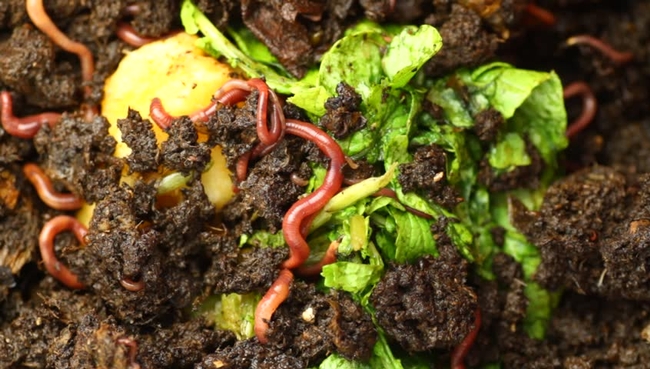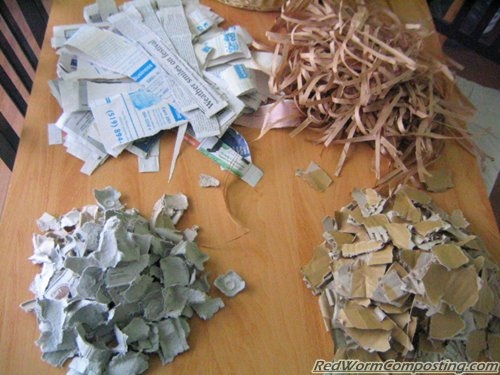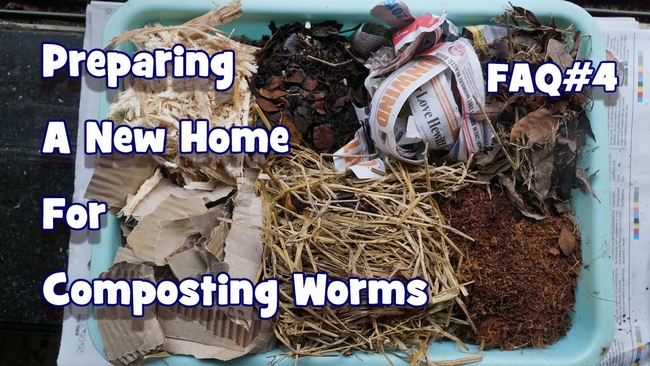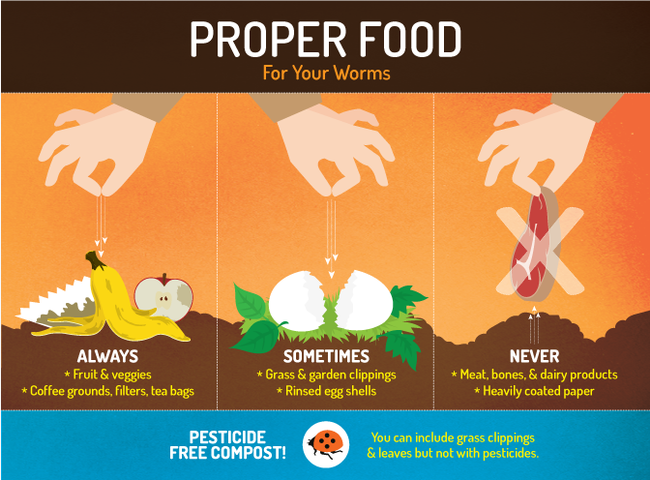It's fall and time to get your worm compost bins in order. Thicker bedding protects the worms during cold weather as they move to the center of the bin to keep warm.
It is sometimes hard to work a compost bin and rebuild it during winter. It's cold, or it's raining. You don't feel like going outside. Put the excuses aside because now is the best time to add new bedding to a worm bin and get it ready for winter. Act now, and by spring, you'll have worm gold for your plants.
I use shredded paper (such as old tax records), torn newsprint, dried leaves, straw, coffee grounds, rice hulls, and plain cardboard. Use what you have. Worms love cardboard. Bacteria also seem to like it; I find that it decomposes faster than newsprint.
I tear newsprint while I watch television, ripping it the long way to get nice strips instead of clumps. I don't use glossy paper or newsprint with colored inks, but worms and their working partners, sowbugs, love black-and-white newspaper.
Most cardboard has plastic tape on it. I don't bother removing tape because the worms and critters leave it alone. When it's time to harvest the compost, I just pick out the tape and put it in the garbage. This saves me a lot of time.
I've recently started putting kitchen waste in the middle of the bin as I build up the materials. I'm hoping to attract worms, sowbugs, beneficial insects, and other bacteria that will make themselves at home. Usually, I add material from the top to watch how long it takes to disappear and become compost.
If I decide the worms and company need help, I can always buy some fishing worms. You can also buy compost worms locally and online. In six months, a dozen worms can produce 1,500 young. Not long ago, I read a post online asking where to buy sowbugs. Build a bin, and they will come.
When building a bin, I make “lasagne” by layering the materials. The worms and their friends will eventually mix everything and decompose it. I water the bin until the material is as damp as a wrung-out sponge. Then I cover the top with plastic to help hold in the moisture. Periodically I check the bins and add water as needed. If the bedding is decomposing quickly, I may add more on top.
When you add kitchen waste and plants to the bin, avoid fruit with small seeds or weeds with seeds. Your working critters do not eat those seeds, so you may be surprised by what pops up in your newly composted garden. One year I had cantaloupe seedlings everywhere. If the seeds are big enough, you can sift them out when you harvest the compost. I also avoid putting in spent tomato vines because they can infect compost with virus.
I do add egg shells, paper towels, empty toilet paper rolls, and kitchen scraps. I have discovered that my worms love tortillas. Avoid adding items with cheese or meat, like leftover casserole. Don't add manure from carnivorous animals or let your kitty use the bin for a litter box. However, worms do appreciate a dash of aged chicken manure.
Take care not to overfeed the worms, as fruit flies will move in. If you see fruit flies, stop feeding for two weeks and add more bedding to your bin. Some composters add lint from the clothes dryer, but I never do that, as many fabrics contain polyester. I do add dog hair and hair from my own brush, and they are gone by the time I harvest. It is amazing what worms will eat.
At harvest time, any material that hasn't fully decomposed goes into the bottom of a new bin. Then I dry out the compost, remove the worms and sowbugs, move them to the new bin and sift the compost. Dry compost lasts a long time, or you can spread it at once.
If you are a new composter, there are lots of possibilities for bins. You can purchase an 18-gallon tub and drill ¼-inch holes all around for air. I have used garbage cans with holes drilled in them, or you can purchase worm bins.
Next spring and summer, the City and County of Napa will collaborate with Napa County Master Gardeners on composting classes. Learn about all types of composting: hot, warm and cold. You can also purchase bins at these workshops. With time and worms, compost happens.
Help Desk: The Master Gardener Help Desk is available to answer your garden questions on Mondays and Fridays from 10 a.m. until 1 p.m. Send your questions to mastergardeners@countyofnapa.org. Include your name, address, phone number, and a brief description of the problem. For best results, attach a photo of the plant. You may also leave a voicemail message with the same information at 707-253-4143.
Gardening with the Masters: Join UC Master Gardeners of Napa County for a gardening workshop on Saturday, November 19, at Ole Health Garden, 300 Hartle Court, Napa. Class size is limited, so please register to attend.
Library Talk: UC Master Gardeners will host a talk on “Seasonal Tips and Ideas for the Gardener at Heart” via Zoom on Thursday, December 1, from 7 pm to 8 pm. Learn about living holiday trees, forced bulbs, and gift ideas for gardeners in your life. Register to receive the Zoom link.
Attached Images:

The Easiest Way To Compost During Frigid Winter Months (offthegridnews.com)

Worm Bin Bedding - In More Detail (redwormcomposting.com)

Vermicomposting 101- How to Create & Maintain a Simple Worm Bin (pinterest.com)

Worm Bin Bedding Options Bedding for Vermicomposting Bin (youtube.com)

Vermicomposting- How To Worm Your Way Into Composting Heaven (care2.com)